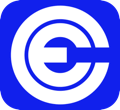Drupal CMS Overview
Drupal is an open-source platform for creating digital experiences, maintained by a dedicated community. It is free and accessible to everyone.
Use Cases
Customers recommend Content Management, Communication Management, Collaboration, as the business use cases that they have been most satisfied with while using Drupal CMS.
Business Priorities
Acquire Customers and Grow Market Share are the most popular business priorities that customers and associates have achieved using Drupal CMS.
Drupal CMS Use-Cases and Business Priorities: Customer Satisfaction Data
Drupal CMS works with different mediums / channels such as Website.
Drupal CMS's features include Widgets, Templates, Personalization, etc. and Drupal CMS support capabilities include Phone Support, Email Support, Chat Support, etc. also Drupal CMS analytics capabilities include Analytics, and Custom Reports.
Reviews
"...From my experience it isn't easy to screw up and take down the whole site while in editing the content...." Peer review by Tim Regas
Drupal CMS, Adobe Creative Cloud, Paperflite, Docsvault, Wordable, etc., all belong to a category of solutions that help Content Management Systems. Each of them excels in different abilities. Therefore, determining the best platform for your business will depend on your specific needs and requirements.
Popular Business Setting
for Drupal CMS
Top Industries
- Information Technology and Services
- Internet
- Computer Software
Popular in
- Small Business
- Mid Market
- Enterprise
Drupal CMS is popular in Information Technology And Services, Internet, and Computer Software and is widely used by Small Business, Mid Market, and Enterprise.
Drupal CMS Customer wins, Customer success stories, Case studies
What makes Drupal CMS ideal for Content Management?
How can Drupal CMS enhance your Communication Management process?
What makes Drupal CMS ideal for Collaboration?
What solutions does Drupal CMS provide for Workflow Management?
How does Drupal CMS address your Onboarding Challenges?
11 buyers and buying teams have used Cuspera to assess how well Drupal CMS solved their Content Management Systems needs. Cuspera uses 9421 insights from these buyers along with peer reviews, customer case studies, testimonials, expert blogs and vendor provided installation data to help you assess the fit for your specific Content Management Systems needs.
Composable- Discovering Drupal’s next-gen way to structure content

Frequently Asked Questions(FAQ)
for Drupal CMS
What is Drupal CMS?
Drupal CMS is a n open source content management software. It's used to make many of the websites and applications you use every day. It helps to Improve digital and social presence.
Drupal has great standard features, like easy content authoring, reliable performance, and excellent security. But what sets it apart is its flexibility; modularity is one of its core principles. Its tools help to build the versatile, structured content that dynamic web experiences need.
It's also a great choice for creating integrated digital frameworks. It can be extended with any one, or many, of thousands of add-ons. Modules expand Drupal's functionality. Themes let you customize your content's presentation. Distributions are packaged Drupal bundles used as starter-kits. Mix and match these components to enhance Drupal's core abilities.
What is Drupal CMS used for?
What are the top features of Drupal CMS?
Who uses Drupal CMS?
What are Drupal CMS alternatives?
Where is Drupal CMS located?
Drupal CMS Competitors
Drupal CMS Features
- Low
- Medium
- High
| FEATURE | RATINGS AND REVIEWS |
|---|---|
| AI Powered | Read Reviews (18) |
| Analytics | Read Reviews (149) |
| Custom Reports | Read Reviews (1058) |
| CAPABILITIES | RATINGS AND REVIEWS |
|---|---|
| AI Powered | Read Reviews (18) |
| Analytics | Read Reviews (149) |
| Custom Reports | Read Reviews (1058) |
Drupal CMS Integrations
Drupal CMS integrates with a wide range of software applications through its robust data import and export capabilities.
Few API Integrations for Drupal CMS
Software Failure Risk Guidance
?for Drupal CMS
Overall Risk Meter
Top Failure Risks for Drupal CMS
Drupal Association News
Alliance Interactive, a Leading Drupal Development Company, Launches Accelerated ... - CBS 42
Alliance Interactive, a Leading Drupal Development Company, Launches Accelerated ... - CBS 42
Drupal AI initiative: what it is and what to expect
Drupal AI initiative: what it is and what to expect
Drupal Launches New AI Initiative to Democratize Intelligent Digital Experiences for Everyone
Drupal.org has launched a new AI initiative aimed at making intelligent digital experiences accessible to a wider audience. This project focuses on integrating artificial intelligence capabilities into the Drupal platform, enabling users to build smarter, more personalized websites and applications. The initiative seeks to lower barriers for organizations adopting AI-driven content management and digital experience solutions.
Drupal CMS: Groundbreaking New Version of Drupal Detailed at DrupalCon Singapore 2024
Drupal unveils a groundbreaking new version at DrupalCon Singapore 2024, highlighting significant advancements in the content management system.
Drupal Association Profile
HQ Location
3439 NE Sandy Blvd #269, Portland, OR 97232, United States of America
Employees
11-50
Social
Financials
PRIVATE



















